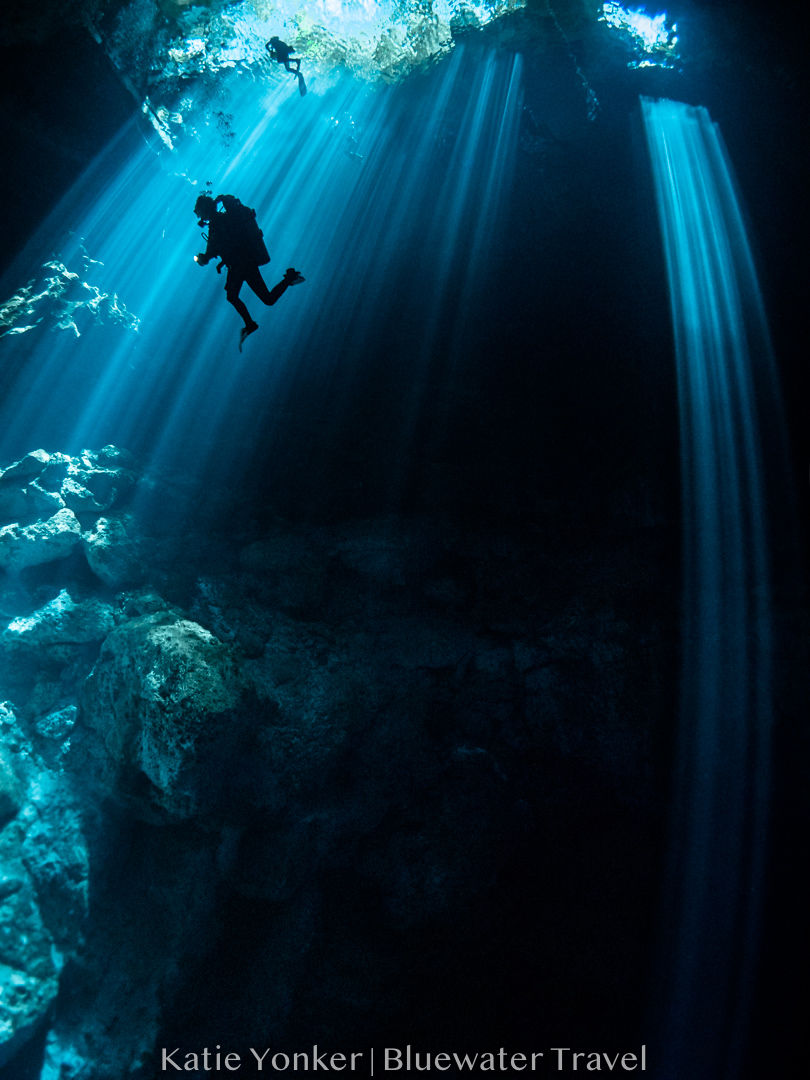Five Things You Didn't Know About the Cenotes | Scuba Diving Blog
- gillian283

- Apr 8, 2021
- 2 min read
On Mexico's Yucatan Peninsular, the world-famous cenotes attract divers from all over the world to explore their mysterious tunnels and passageways. Intriguing caverns, light and shadow shows, archways, fascinating rock structures, and narrow cracks and crevices offer exploration opportunities for all levels of diver and snorkeler. But what is it about the cenotes that make them the world's best-known cavern and cave dive site?

Here are five facts that you might not know about the cenotes.
1. The ancient Maya people believed that cenotes were the entrance to a sacred Otherworld where their god of rain, Chaak, kept water stored in earthenware jars. Archaeologists are uncovering more and more sacred sites located within cenotes, suggesting they were extremely influential in the lives of the Mayas. Exploring these ethereal cave systems, it's quite clear they provide a link between the surface and the subterranean world.
2. Of the estimated 6,000 cenotes spread across the Yucatan Peninsula, only 2,500 have been explored and documented. Some of the best-known have been well-developed, with car parking facilities, restrooms, and access down to the water, while others are still in the depths of the jungle.
3. The term cenote derives from the low-land Yucatan Maya language where the term ts'onot is used to describe any location with accessible groundwater. From ancient Maya times up until the early 1900s, many cenotes were still used as a source of drinking water for local farmers and villages.
4. In 1936 cenotes were grouped into one of four classes based on their apparent morphology as observed from the surface:
Jug/pit cenotes have a narrow surface connection with a larger body of water below;
Cylinder cenotes have vertical walls;
Basin cenotes are those with shallow basins of water;
Cave cenotes feature a horizontal entrance and some dry sections.
Now that cenotes have been further explored and mapped, these four classifications are far less accurate than once assumed.

5. The water within cenotes is fresh groundwater that has filtered through the surrounding bedrock over many thousands of years. Filtration rates vary and can range from 3 to 3,300 feet per year (1 to 1,000 m per year). Being so well filtered, the water has almost no particles suspended in it, making for exceptional visibility. However, the nutrients have also been filtered out which is why there is very little marine life within the cenotes.
Book your next cenotes dive trip with Bluewater Travel.
Check out the latest reviews on the Canon R5 underwater housing from the Underwater Photography Guide.
For great rates on the Canon R5 underwater housing, check out the Bluewater Photo Store.










Comments